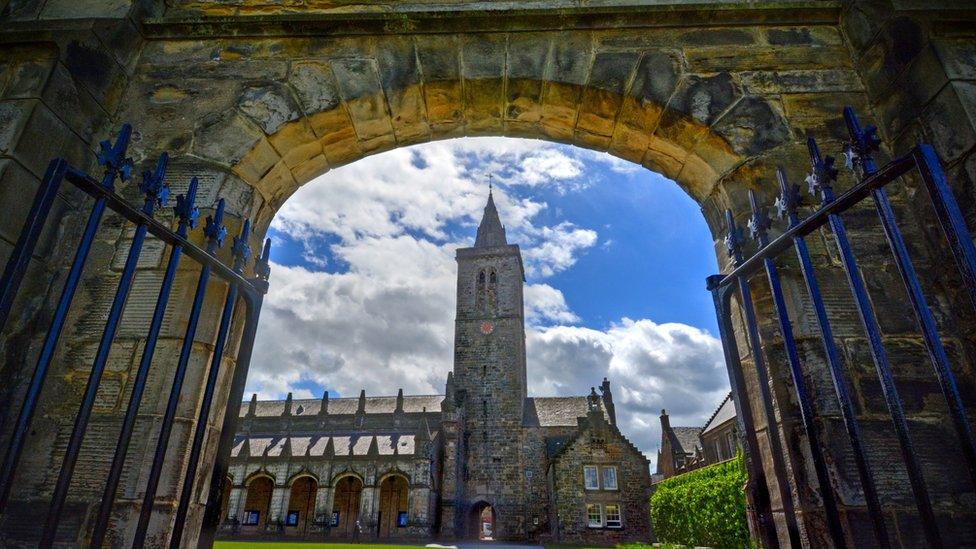Covid in Scotland: Students and 'hotspot' areas targeted in testing
- Published
- comments
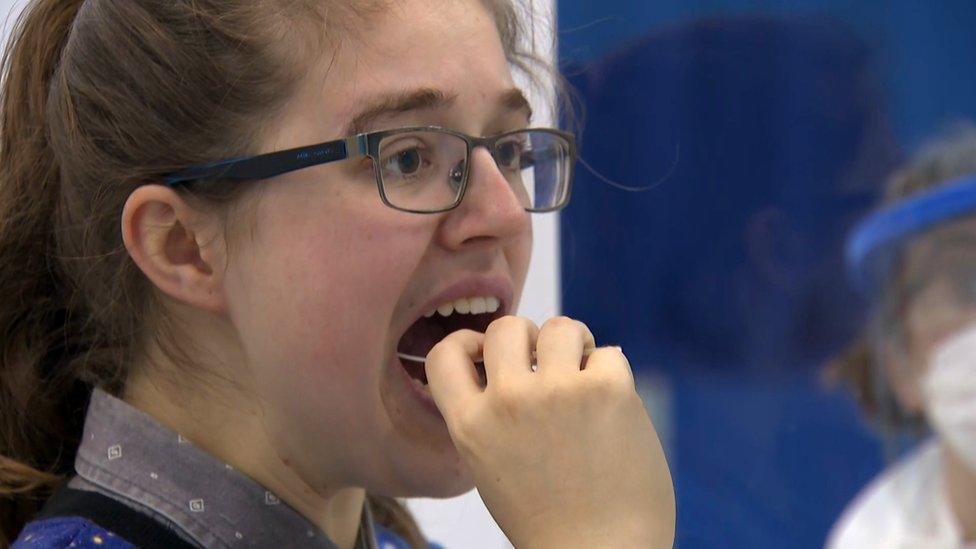
All 19 of Scotland's higher education institutions will be taking part in the student testing programme
Two new mass testing programmes for Covid-19 are under way in a bid to drive down infection rates before Christmas.
Testing of Scotland's university students is beginning in an effort to make sure they are safe to return home.
And residents in five coronavirus hotspots are being targeted as part of a trial mass testing programme.
They include communities in areas of Glasgow, Ayrshire, Clackmannanshire and Renfrewshire.
Experts say the community testing could cut the chain of transmission by identifying asymptomatic cases of coronavirus.
The tests are being carried out in parts of Scotland were public health officials consider the numbers are "stubbornly high".
First Minister Nicola Sturgeon said they would help inform decisions about expanding community testing "much more extensively" in the New Year.
She added: "It's important to stress that any test will only tell you if you are positive at that point in time, when you are being tested - they will not necessarily show up if you are still incubating the virus.
"So they do not mean you can or should stop following all the other safety measures in place."
Why are students being tested?
The testing of students is part of a separate programme designed to minimise the spread of Covid-19 as many of them prepare to return home for Christmas.
All students are being asked to take two rapid lateral flow device (LFD) tests before travelling.
The tests should be taken three days apart and if they are both negative they will be encouraged to go home as soon as possible.
If either test is positive, the student will be asked to self-isolate.
Positive cases should also take a more reliable PCR (polymerase chain reaction) test through NHS Test & Protect.
It is thought about 80,000 students could be planning a trip home during the winter break.
NUS Scotland president Matt Crilly said he "strongly encouraged" any student moving household over the holidays to get tested.

What are lateral flow tests?
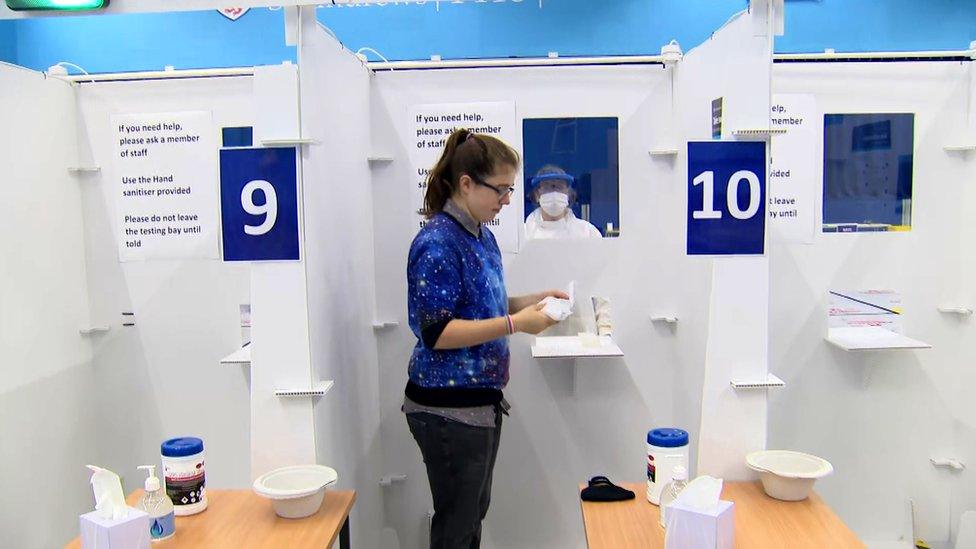
The St Andrews testing centre can process 1,500 lateral flow tests per day
They are rapid turnaround tests, where samples are processed on-site with no lab required and results are available in under half an hour.
They have allowed the introduction of mass testing but they are not as accurate as the PCR tests that are carried at NHS test centres.
Health Secretary Jeane Freeman told parliament this week the lateral flow tests had an overall sensitivity of 76.8% - meaning the test will identify more than seven in 10 positive cases of Covid.
Students are encourage to take two tests to increase the chances of the virus being picked up.
Ms Sturgeon said the tests "produce results much more quickly" and are "potentially very useful", but that any positive results would be confirmed via PCR testing.

The LFD tests being given to students have been criticised by Allyson Pollock, Professor of Public Health at Newcastle University.
Prof Pollock told BBC Radio's Good Morning Scotland programme they can result in 50% of cases being missed, leading to a "false reassurance".
"The other big issue for students is they're not being given good information about the purpose of test, what a test means and the fact it could result in a false reassurance and a false negative."
Prof Pollock said that students should be self-isolating if they were returning to households with vulnerable people.
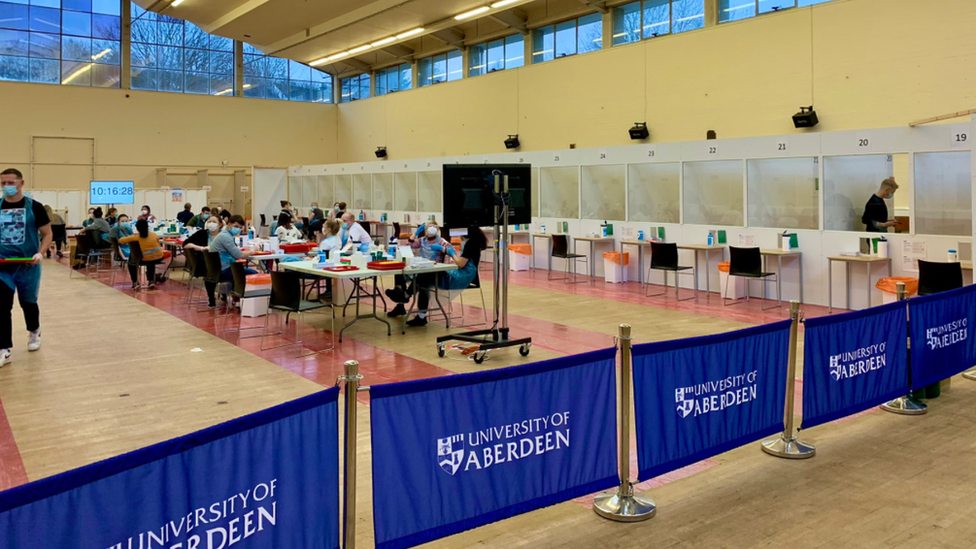
Aberdeen University are hoping to test about 8,000 students over the next 10 days
But Scotland's national clinical director, Prof Jason Leitch, said lateral flow testing could detect four out of five positive cases, despite the test's sensitivity level being between 50% and 70%.
"There is an element of false reassurance... but this is the tech we have available. So until the tech gets better, surely we should use the tech as good as we've got for the best purpose it has?"
He told BBC Scotland that students were not being told to isolate for two weeks when they got home "as that wouldn't be much of a Christmas".
"[The guidance] does tell them to turn down their social interaction now in order to be safe when they go home to their parents, their grandparents, their siblings," he added.
"Testing is not the umbrella around which we've based our student guidance, quite the opposite. The student guidance is all about communication, empathy, working with the student population - and element of that will be testing."
Minimise risks
Universities minister Richard Lochhead said all 19 higher education institutions in Scotland were taking part in the testing programme, with some sharing facilities.
He said the aim was to minimise the risk of students taking the virus back home to their families.
Mr Lochhead said there was a good probability the virus would be captured by the test but other safety measures such as limiting mixing with other students were also very important.
St Andrews opened its testing centre over the weekend.
Alastair Merrill, the university's vice-principal, said it would be able to process 1,500 lateral flow tests a day.
He said: "We are keeping the centre open until the end of semester so as many students as possible have the opportunity to get their two tests before travelling home for Christmas."
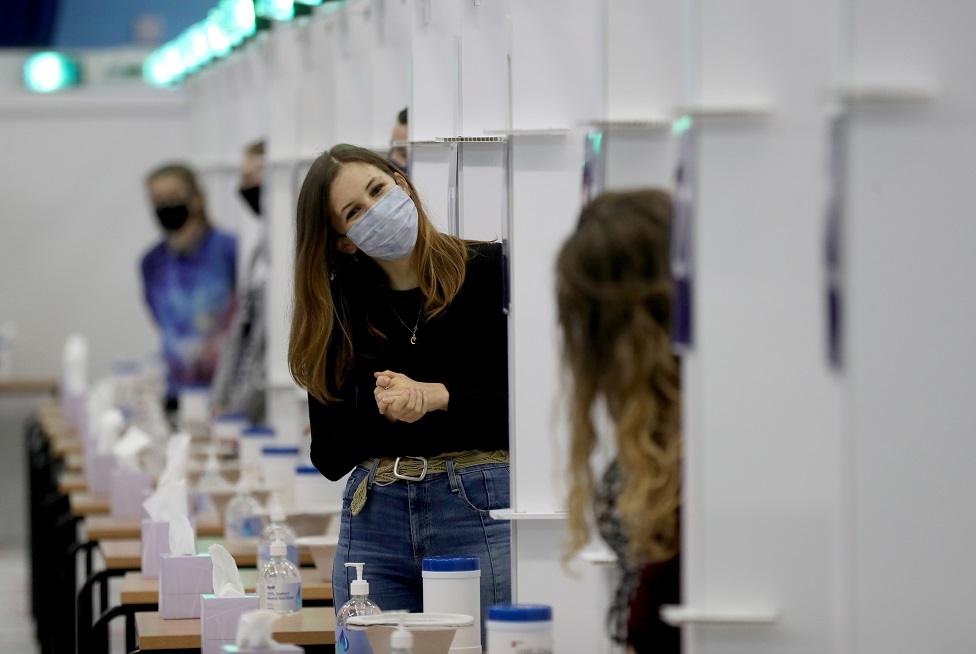
Mr Merrill said there had been a "spike" in Covid case at the start of term in September, particularly among first-year students.
He said there had been 100 cases in total, most in private student accommodation.
"We have been very successful in containing the spread," he said. "There has been no evidence of spread in classrooms or education settings."
He also said there was no evidence of any transmission from students to the wider community.
Mr Merrill said he thought that a similar approach to mass testing would be an important part of bringing students back to the university after the Christmas break.


- Published19 November 2020
